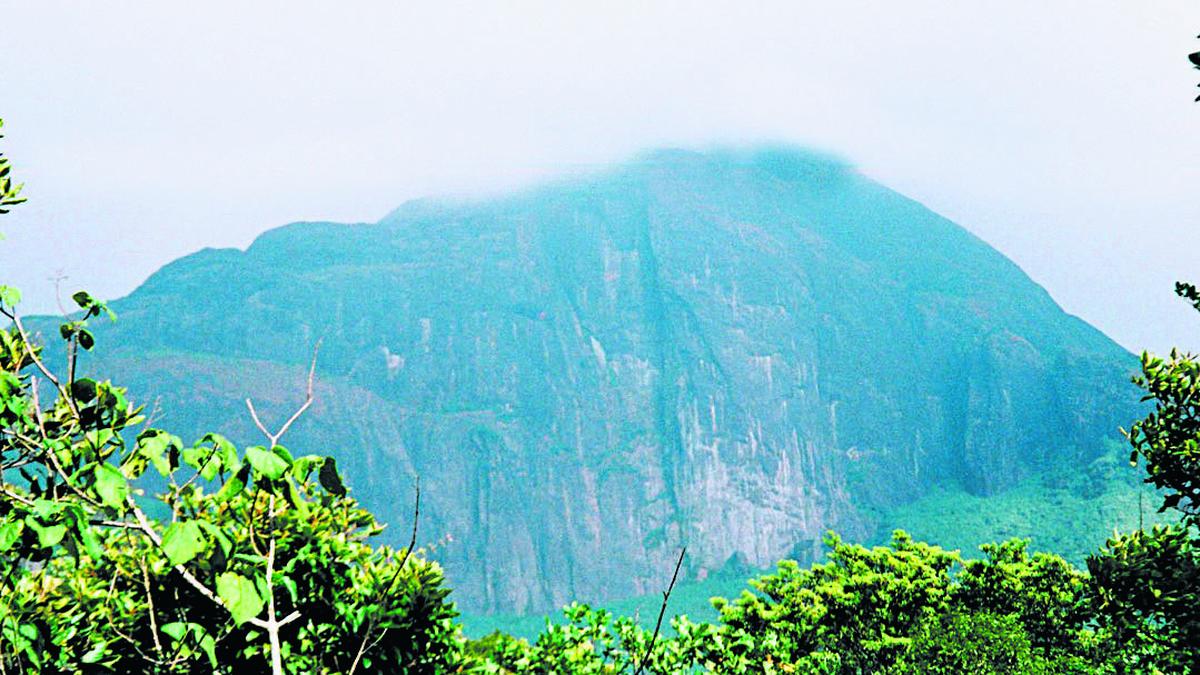Supreme Court has directed extensive survey of the entire tropical forest ecosystems of the Agasthyamalai landscape. File
| Photo Credit: Special Arrangement
The Supreme Court has directed the Central Empowered Committee (CEC) to conduct an extensive survey of the entire tropical forest ecosystems of the Agasthyamalai landscape in the southernmost Western Ghats to identify non-forestry activities and encroachments.
Also Read | Destruction in Kancha Gachibowli ‘forest’ area depicts an ‘alarming picture’, says SC
In a 16-page judgment, a Bench of Justices Vikram Nath and Sandeep Mehta termed the survey as an interim measure “to initiate the process of restoration of the pristine forest areas and to protect the tiger habitats, wildlife reserves and sanctuaries falling under the Agasthyamalai biosphere”.
The Agasthyamalai landscape is recognised by the United Nations Educational, Scientific and Cultural Organisation (UNESCO) as a 3,500-km biosphere reserve falling within both Tamil Nadu and Kerala.
The CEC survey would include the Periyar tiger reserve, Srivilliputhur grizzled squirrel wildlife sanctuary, Meghamalai and Thirunelveli wildlife sanctuaries.
“The CEC shall indicate in its report all instances of non-forestry activities going on in these areas contrary to the statutory provisions viz, the Forest Conservation Act, 1980, the Wild Life (Protection) Act, 1972, etc,” Justice Mehta, who authored the judgment, directed. The judgment was pronounced on March 24 and published on Friday.
The report would contain the comparative data pertaining to the forest cover as it existed earlier vis-à-vis the current position in order to gauge the extent of depletion and degradation in the forest area.
“Forests form the lungs of the ecosystem, and any depletion/destruction of forest areas has a direct impact on the entire environment. The world at large is facing the calamities caused by climate change, and the primary culprit behind this is the depleting forest cover owing to a myriad of issues including rapid urbanisation, unchecked industrialisation, encroachments, etc.,” Justice Mehta observed.
The judgment was based on a recommendation made by its amicus curiae, senior advocate K. Parmeshwar, who submitted that plantations and systematic encroachments in the landscape for almost a century have depleted the forest cover. He said the forest areas, which include core critical tiger habitats, have to be identified and distinctly demarcated through a scientific survey. The State of Tamil Nadu must be mandated to remove infrastructure, including fair price shops, schools, anganwadi, banks, water supplies, roads, bridges, transport facilities, etc, in the reserved forest areas
Tamil Nadu Advocate General P.S. Raman assured the State was committed to rid the Agasthyamalai landscape from encroachments to restore it to its original form. Solicitor General Tushar Mehta, for the Centre, agreed to “unreservedly comply with all directions” of the court.
Also Read | Forest areas encroached in 25 States, Union Territories; MP, Assam worst affected: Government report
The judgment came in separate petitions highlighting the immediate need to preserve the reserved forests, wildlife sanctuaries and tiger reserves in Tamil Nadu as well as the rehabilitation of workers who were evicted after the Bombay Burma Trading Corporation Limited tea estate at Singampatti, Tamil Nadu, was declared to be a reserved forest, wildlife sanctuary and tiger reserve under the provisions of the Wild Life (Protection) Act.
The Supreme Court said the Madras High Court while focussing on the rehabilitation of the workers left the issue of conservation and restoration of the forest inconclusive in December 2024.
Mr. Raman said the restoration of the Singampatti Zamin area as a forest area has already commenced. He said the relocation and rehabilitation of the workers was complete.
The court decided to examine the issue of rehabilitation of the workers on April 22.
Published – April 04, 2025 04:30 pm IST
